Kunststoffe sind eine der nützlichsten Materialklassen die je erfunden wurden. Für viele Anwendungen ist der Verzicht auf Kunststoff fast undenkbar. Allerdings ist die Langlebigkeit von Kunststoff auch ein Nachteil, wenn er in die Umwelt gelangt. Was kann man also tun? Wir müssen das Leben mit Kunststoffen neu überdenken.
Trotz der zunehmenden Forderung der Öffentlichkeit nach einer effizienteren Nutzung von Kunststoffen und einer effektiveren Behandlung von Kunststoffabfällen ist zu erwarten, dass die Nachfrage nach Kunststoffen erheblich steigen wird.
Die Strategien zur Bewältigung der damit zusammenhängenden Probleme unterscheiden sich im Detail, aber es zeichnet sich ein Konsens über den allgemeinen Ansatz zur Lösung dieser Probleme ab. Dieser Ansatz wird oft mit einem sehr kurzen Satz beschrieben. Die Reihenfolge bzw. Priorität lautet „Reuse, Reduce, Recycle“.
Wenn man die globalen Trends des menschlichen Verhaltens einer ehrlichen Bewertung unterzieht, ist klar, dass Reduzierung und Wiederverwendung von Kunststoffen allein das Problem nicht lösen werden. Selbst wenn wir die Produktion sofort einstellen und Kunststoffe möglichst nur wiederverwenden würden, gäbe es immer noch Berge von Plastikmüll auf der ganzen Welt.
Also muss „Recycle“ eine wichtige Rolle spielen. Es gibt viele Methoden des Recyclings: mechanisches, physikalisches oder chemisches Recycling sowie andere Methoden. Bei der Festlegung der Hierarchie dieser Methoden ist ein wichtiges Kriterium zu beachten. Die Methode mit der geringsten Umweltbelastung sollte die höchste Priorität bekommen.
Nach diesem Kriterium liegt das chemische Recycling auf dem letzten Platz oder zumindest sehr weit unten. Warum? Die Umwandlung von Kunststoffabfällen in brauchbare Grundstoffe für die Herstellung neuer Produkte erfordert mehr Energie als die meisten anderen Methoden.
Trotz alledem spielt das chemische Recycling nach wie vor eine wichtige Rolle. Es gibt viele Materialien, die mit anderen Methoden nicht recycelt werden können bzw. die nicht für Anwendungen wiederverwendbar sind, bei denen diese anderen Methoden nicht die erforderliche Produktqualität und/oder die geforderten Produkteigenschaften liefern können.
Hier kommt die Pyrolyse, eine Art des chemischen Recyclings und Grundlage unserer Technologie, zum Tragen.
Unsere Technologie für chemisches Recycling umfasst Folgendes:
Behandlung und Materialhandhabung
Einige Rohmaterialien müssen möglicherweise für das chemische Recycling behandelt werden. Das Rohmaterial sollte zerkleinert, getrocknet sowie ohne Metalle und anorganische Fasern an die chemische Recyclinganlage geliefert werden.
Wenn Sie Unterstützung bei den mechanischen Prozessschritten bzw. bei einem Fördersystem benötigen, um den Rohstoff von der Quelle zur chemischen Recyclinganlage zu transportieren, lassen Sie es uns wissen. Mithilfe unserer Partner können wir eine Lösung aus einer Hand anbieten.
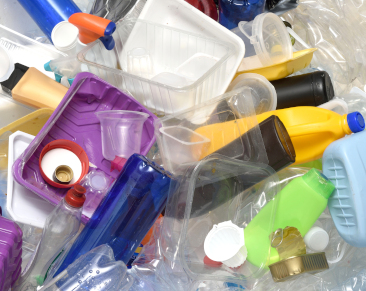
Zuführung/Extrusion
Sobald das Rohmaterial zur chemischen Recyclinganlage befördert wurde, wird es der Vorwärm- und Extrusionsanlage zugeführt.
Dieser wichtige Schritt sorgt für eine kontinuierliche Versorgung des Pyrolysereaktors mit Rohmaterial im geeigneten halbgeschmolzenen Zustand und trägt dazu bei, dass der Reaktor mit höchster Effizienz läuft.
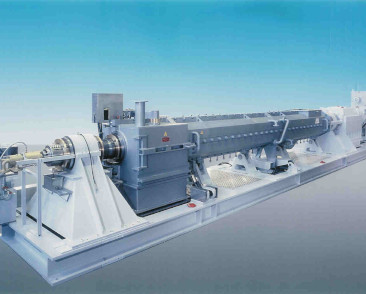
Flash Pyrolyse
Der patentierte Flash-Pyrolyse-Reaktor ist das Herzstück der chemischen Recyclinganlage der BUSS ChemTech.
Er versorgt die halbgeschmolzenen Mischkunststoffabfälle mit exakt der richtigen Wärmemenge, um die gewünschten hochwertige Grundstoffe zu erhalten und gleichzeitig die Verluste (in Form von Nebenprodukten) und den Energieverbrauch zu minimieren.
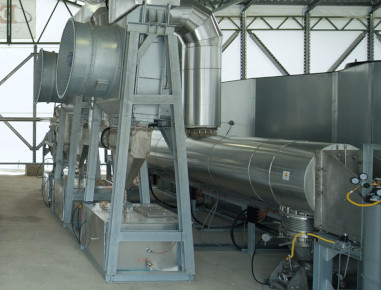
Ölkondensation und Nachbehandlung
Die Bedürfnisse jedes Kunden sind unterschiedlich. (Aber das wissen Sie ja bereits!)
Ob nur die höchste Ausbeute der Pyrolyse – unabhängig von der Kettenlänge – oder die Klassierung der Ketten in verschiedene Längenbereiche erforderlich sind, wir können die Ölfraktionierung so anpassen, dass die gewünschten Produkte erhalten werden.
Darüber hinaus verfügen wir über das Fachwissen im Bereich der Hydrierung und in Zusammenarbeit mit unseren Partnern über andere Reinigungstechniken, um die Produkte so zu modifizieren, dass sie aufgespalten werden können.
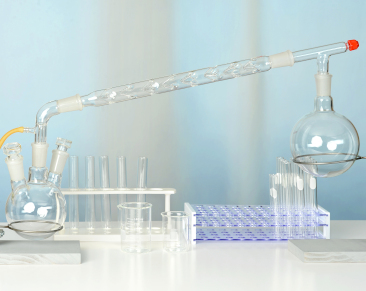
Entfernung von Feststoffen
Bei Rohmaterialien mit „typischen“ Eigenschaften entstehen etwa 5 Gew.-% feste Reststoffe mit hohem Kohlenstoffgehalt.
Die Entfernung der Feststoffe ist ein patentierter Verfahrensschritt unserer chemischen Recyclingtechnologie. Die ordnungsgemässe Entfernung ist entscheidend für die Qualität des Pyrolyseöls. Beides geht Hand in Hand.
Normalerweise reicht es aus, die Feststoffe in Behälter herabfallen zu lassen, aber wenn aufgrund örtlicher Vorschriften ein geschlossenes System erforderlich ist, können wir auch diese Ausrüstung liefern.
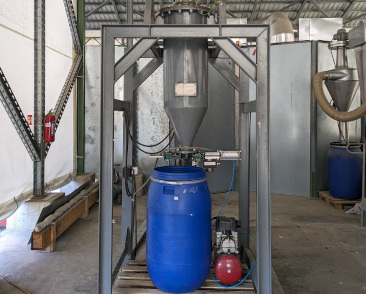
Gasbehandlung
Unser Flash-Pyrolyse-Reaktor liefert brennbare Gase, die direkt verwendet (siehe Energierückgewinnung unten) oder für den späteren Verkauf gelagert werden können.
Einige Rohmaterialien enthalten unter Umständen umweltschädliche Verbindungen, die aus dem Flash-Pyrolyse-Reaktor in der gasförmigen Phase austreten. Für diese Fälle liefern wir Absorptionsanlagen zur Entfernung und/oder Neutralisierung dieser Verbindungen, bevor das Gas als Energie genutzt wird.
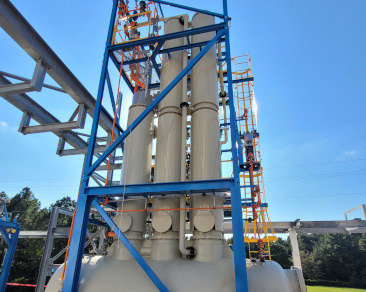
Energierückgewinnung
Ein wesentliches Merkmal unseres chemischen Recyclingverfahrens ist, dass sie energieneutral ist.
Der Einsatz eines gasgetriebenen Generators im chemischen Recyclingprozess ermöglicht es der Anlage, sich selbst – und einen Grossteil der erforderlichen Nebenaggregate – mit elektrischer Energie zu versorgen.
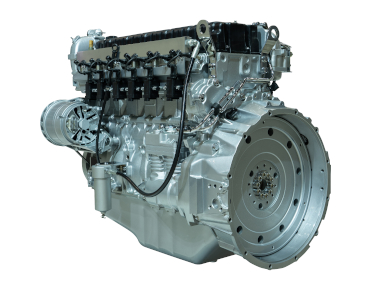
Unsere Technologie für chemisches Recycling umfasst Folgendes:
Behandlung und Materialhandhabung
Einige Rohmaterialien müssen möglicherweise für das chemische Recycling behandelt werden. Das Rohmaterial sollte zerkleinert, getrocknet sowie ohne Metalle und anorganische Fasern an die chemische Recyclinganlage geliefert werden.
Wenn Sie Unterstützung bei den mechanischen Prozessschritten bzw. bei einem Fördersystem benötigen, um den Rohstoff von der Quelle zur chemischen Recyclinganlage zu transportieren, lassen Sie es uns wissen. Mithilfe unserer Partner können wir eine Lösung aus einer Hand anbieten.
Zuführung/Extrusion
Sobald das Rohmaterial zur chemischen Recyclinganlage befördert wurde, wird es der Vorwärm- und Extrusionsanlage zugeführt.
Dieser wichtige Schritt sorgt für eine kontinuierliche Versorgung des Pyrolysereaktors mit Rohmaterial im geeigneten halbgeschmolzenen Zustand und trägt dazu bei, dass der Reaktor mit höchster Effizienz läuft.
Flash Pyrolyse
Der patentierte Flash-Pyrolyse-Reaktor ist das Herzstück der chemischen Recyclinganlage der BUSS ChemTech.
Er versorgt die halbgeschmolzenen Mischkunststoffabfälle mit exakt der richtigen Wärmemenge, um die gewünschten hochwertige Grundstoffe zu erhalten und gleichzeitig die Verluste (in Form von Nebenprodukten) und den Energieverbrauch zu minimieren.
Ölkondensation und Nachbehandlung
Die Bedürfnisse jedes Kunden sind unterschiedlich. (Aber das wissen Sie ja bereits!)
Ob nur die höchste Ausbeute der Pyrolyse – unabhängig von der Kettenlänge – oder die Klassierung der Ketten in verschiedene Längenbereiche erforderlich sind, wir können die Ölfraktionierung so anpassen, dass die gewünschten Produkte erhalten werden.
Darüber hinaus verfügen wir über das Fachwissen im Bereich der Hydrierung und in Zusammenarbeit mit unseren Partnern über andere Reinigungstechniken, um die Produkte so zu modifizieren, dass sie aufgespalten werden können.
Entfernung von Feststoffen
Bei Rohmaterialien mit „typischen“ Eigenschaften entstehen etwa 5 Gew.-% feste Reststoffe mit hohem Kohlenstoffgehalt.
Die Entfernung der Feststoffe ist ein patentierter Verfahrensschritt unserer chemischen Recyclingtechnologie. Die ordnungsgemässe Entfernung ist entscheidend für die Qualität des Pyrolyseöls. Beides geht Hand in Hand.
Normalerweise reicht es aus, die Feststoffe in Behälter herabfallen zu lassen, aber wenn aufgrund örtlicher Vorschriften ein geschlossenes System erforderlich ist, können wir auch diese Ausrüstung liefern.
Gasbehandlung
Unser Flash-Pyrolyse-Reaktor liefert brennbare Gase, die direkt verwendet (siehe Energierückgewinnung unten) oder für den späteren Verkauf gelagert werden können.
Einige Rohmaterialien enthalten unter Umständen umweltschädliche Verbindungen, die aus dem Flash-Pyrolyse-Reaktor in der gasförmigen Phase austreten. Für diese Fälle liefern wir Absorptionsanlagen zur Entfernung und/oder Neutralisierung dieser Verbindungen, bevor das Gas als Energie genutzt wird.
Energierückgewinnung
Ein wesentliches Merkmal unseres chemischen Recyclingverfahrens ist, dass sie energieneutral ist.
Der Einsatz eines gasgetriebenen Generators im chemischen Recyclingprozess ermöglicht es der Anlage, sich selbst – und einen Grossteil der erforderlichen Nebenaggregate – mit elektrischer Energie zu versorgen.

Polymertypen
Je „reiner“ und „sauberer“ ein Kunststoffabfallstrom ist, desto höher ist die Ausbeute an erwünschten Produkten und desto niedriger sind die Betriebskosten. Die Trennung der Polymertypen und die Sicherstellung eines Minimums an Verunreinigungen ist jedoch auch mit einem gewissen Aufwand (in Form von Ausrüstung und Energie) verbunden.
In einigen Fällen kann es umweltfreundlicher und wirtschaftlich sinnvoller sein, den „gemischten“ und „schmutzigen“ Strom mit einem dafür ausgelegten Verfahren zu verarbeiten. Hier setzt die neuartige chemische Recyclingtechnologie der BUSS ChemTech an. Wir können Mischkunststoffabfälle mit den folgenden Eigenschaften verarbeiten:
- Polymerarten: PE, PP, PA, PS, PC, ABS, und andere
- Papier, Textilien, holziges Material: max. 5-7 % 5-7%
- PVC: bis zu 3 %
- Organische Stoffe: max. 7-10 % 7-10%
- Feuchtigkeit: max. 7-10 % 7-10%
Kontaktiere uns
* Erforderliche Felder
Ihr Kontakt

Thomas Blocher
Business Manager Chemical Recycling
Andere Themen
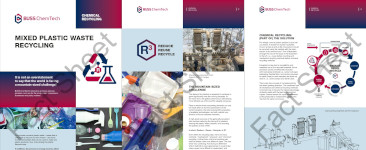
Merkblatt:
Chemisches Recycling
Um mehr über unsere Sichtweise zur Rolle des chemischen Recyclings und insbesondere der Pyrolyse sowie über unsere Technologie zu erfahren, klicken Sie bitte unten.
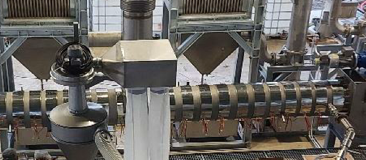
Unser Lieferumfang
Von Technologiepaketen bis hin zu modularen und schlüsselfertigen Lösungen – klicken Sie unten, um sich über unser Dienstleistungsangebot zu informieren.
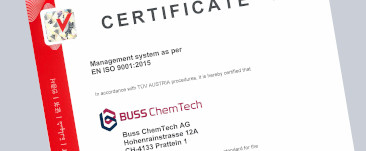
Team & Skills
Wir verfügen über die erforderlichen Ressourcen, um Ihnen nützliche technische Dokumente, robuste Ausrüstung und erfahrenes Personal für Ihr Projekt zur Verfügung zu stellen.